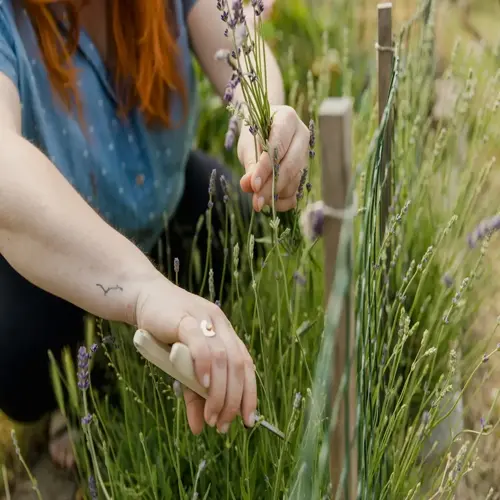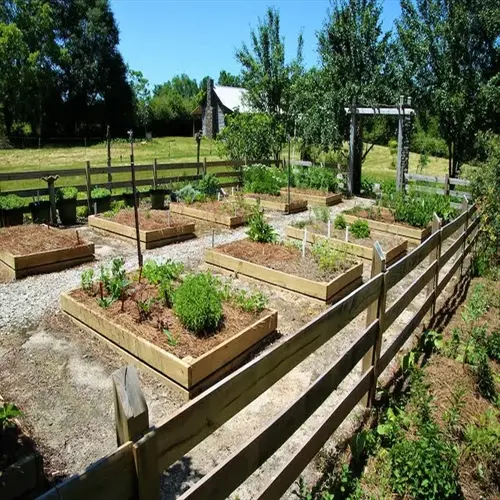When to Prune Roses: A Complete Guide

Written by
Liu Xiaohui
Reviewed by
Prof. Charles Hartman, Ph.D.When to prune roses depends on your USDA zone and local climate conditions.
Spring pruning after frost risk passes is essential for most rose varieties.
Hybrid teas require heavy spring pruning while shrub roses need light trimming.
Avoid fall pruning in cold zones to prevent frost damage on new growth.
Deadhead spent blooms during summer to redirect energy for continuous reblooming.
Match pruning intensity and timing to your specific rose type for optimal results.
Article Navigation
Knowing when to prune roses is what determines whether your plants will thrive or suffer unrest. Pruning stimulates flowering and enhances soil disease resistance. Failure to prune at the proper time exposes them to pests or frost damage. Each rose type, such as hybrid teas, climbers, and shrub roses, requires tailored attention. Get this right and your garden will generously reward you!
Pruning may sound intimidating, but it's actually easier than you think. I learned this when I was caring for my grandmother's rose garden, many years ago. Just follow some basic rules, and you will have healthier plants. Pay attention to seasonal signals (e.g., bud swelling, frost dates, etc.) that you can use to reshape your plants. It works every time, without fail, for your rose garden.
Simple procedures consistently yield amazing results. You don't have to rely on elaborate methods; pay attention to timing. The same goes for your own observations and nature's cues. Roses are forgiving of blunders and will bounce back stronger. Start today and revel in the profusely blooming results that follow, too.
Essential Pruning Tools
When you use the right tools, rose pruning is not a chore, but an enjoyable experience. Bypass shears make cuts that don't crush the stems like anvil-type shears do. Trust me, I learned this the hard way, when I crushed a cane on my prized hybrid tea. Crushed canes invite disease, while clean cuts heal quickly. Keeping your blades sharp (or replacing them if they no longer hold an edge) will ensure clean cutting through woody growth.
Use protective gauntlet gloves that cover your arms completely! Thorns can easily penetrate standard gardening gloves. My favorite pair avoided countless scratches after long periods of pruning. The leather palms provide an incredible grip on tools, and the breathable material prevents sweating and humidity. Safety goggles also protect your eyes from flying debris.
After each plant, disinfect with rubbing alcohol. Wipe blades well between roses to prevent diseases like black spot from spreading in your garden. I keep disinfectant wipes in my apron pocket for quick sanitation. Dirty tools could wipe out your entire rose collection in short order.
Apply pruning sealer to cuts over one inch or thicker as soon as possible. This will seal wounds against cane borers and fungal infections. I use only natural formulas that do not harm beneficial insects. Sealing cuts is vital for hybrid teas and optional for disease-resistant roses. Protect your roses and ensure a reliable healing process.
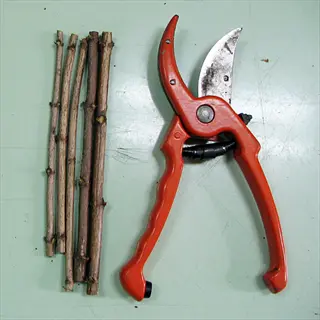
Bypass Shears
- Fact: Bypass shears utilize overlapping blades that create clean cuts without crushing delicate rose canes during pruning activities.
- Fact: Select models featuring replaceable blades and comfortable grips that prove essential during extended pruning sessions in large garden settings.
- Fact: Regular sharpening maintains blade efficiency while preventing ragged cuts that damage plant tissues and invite dangerous infections.
- Fact: Avoid anvil-type shears which smash stems and create entry points for diseases like botrytis blight in rose bushes.
- Fact: Quality bypass shears include adjustable tension screws allowing precise control for cutting stems of different thicknesses.
- Fact: Proper blade alignment ensures smooth cutting action that significantly reduces hand fatigue during prolonged pruning work.
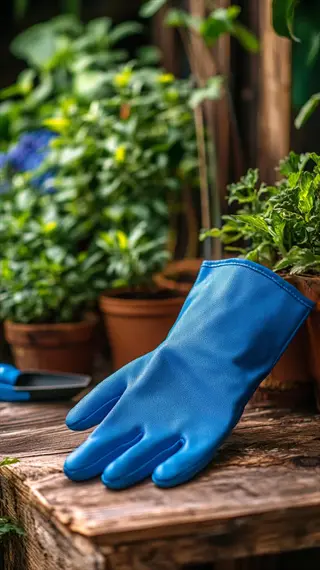
Gauntlet Gloves
- Fact: Extended gauntlet-style protection effectively shields forearms from sharp thorns during pruning activities around dense rose bushes.
- Fact: Choose puncture-resistant materials like leather or reinforced synthetic fabrics that provide durable palm protection.
- Fact: Proper fit ensures necessary dexterity while handling tools and safely navigating through dense thorny rose foliage.
- Fact: Washable designs maintain hygiene standards while preventing disease transfer between different gardening sessions.
- Fact: Breathable fabrics prevent uncomfortable hand sweating during summer pruning sessions in warm climate conditions.
- Fact: Flexible knuckle designs allow natural hand movement required for making precise cuts near developing buds.
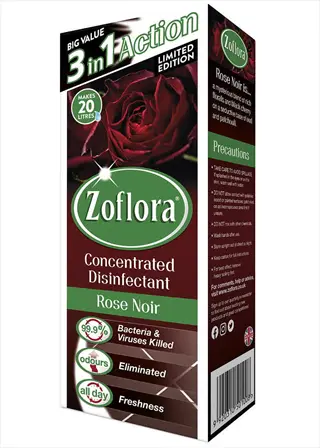
Disinfectant Spray
- Fact: Isopropyl alcohol solutions effectively sterilize blades between plants preventing dangerous pathogen spread in rose gardens.
- Fact: Regular disinfection becomes critical immediately after cutting diseased wood or infected plant material.
- Fact: Carry disinfectant in convenient spray bottles for efficient tool cleaning during extensive pruning work.
- Fact: Proper sterilization significantly reduces fungal and bacterial transmission protecting nearby healthy plants.
- Fact: Alcohol evaporates quickly while leaving no harmful residue that could damage delicate plant tissues.
- Fact: Disinfecting after every plant prevents cross-contamination especially important with black spot infected roses.
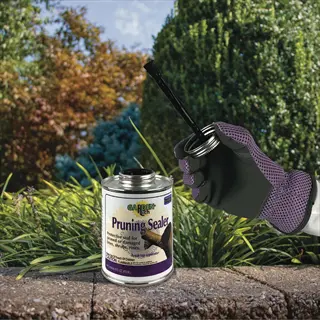
Pruning Sealer
- Fact: Sealants create protective barriers over fresh cuts that effectively deter insect invasions into open wounds.
- Fact: Apply immediately after cutting to prevent moisture-related rot in tender rose canes during healing.
- Fact: Select breathable formulas that do not trap moisture against pruning wounds while encouraging healing.
- Fact: Especially valuable in humid climates where fungal diseases spread rapidly among garden plants.
- Fact: Natural wax-based sealants allow necessary gas exchange while shielding from rain and harmful pests.
- Fact: Reapply after heavy rainfall to maintain continuous protection during critical plant healing periods.
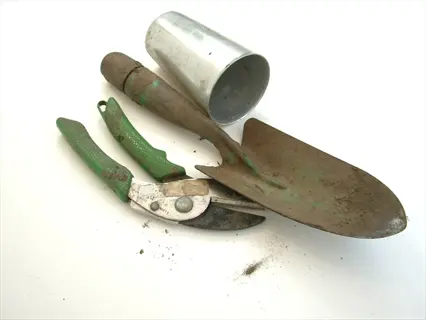
Loppers
- Fact: Long-handled loppers provide essential leverage for cutting thicker canes up to 2 inches in diameter.
- Fact: Bypass-style loppers create clean cuts necessary for promoting healthy regrowth on mature rose plants.
- Fact: Telescopic handles extend safe reach into dense bushes without risking painful thorn injuries.
- Fact: Gear mechanisms multiply cutting power significantly reducing effort required by older gardeners.
- Fact: Lightweight aluminum models minimize fatigue during extended pruning sessions throughout large gardens.
- Fact: Non-slip grips maintain secure control when cutting at awkward angles around support structures.
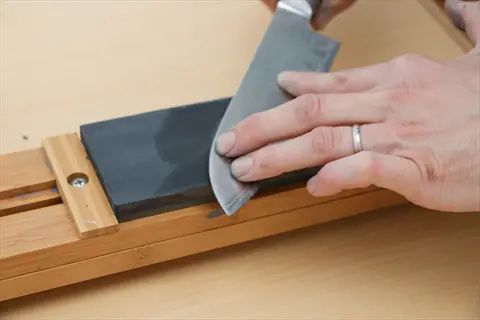
Sharpening Stone
- Fact: Regular honing maintains razor-sharp edges that prove crucial for making precise pruning cuts.
- Fact: Diamond-coated stones sharpen efficiently without gouging delicate high-quality steel blades.
- Fact: Dual-grit surfaces allow coarse reshaping followed by fine edge polishing for optimal sharpness.
- Fact: Portable pocket stones enable quick field sharpening during long pruning days away from workshops.
- Fact: Proper 20-degree angle maintenance preserves blade geometry essential for optimal cutting performance.
- Fact: Lubricating stones prevents metal filings from clogging abrasive surfaces during sharpening work.
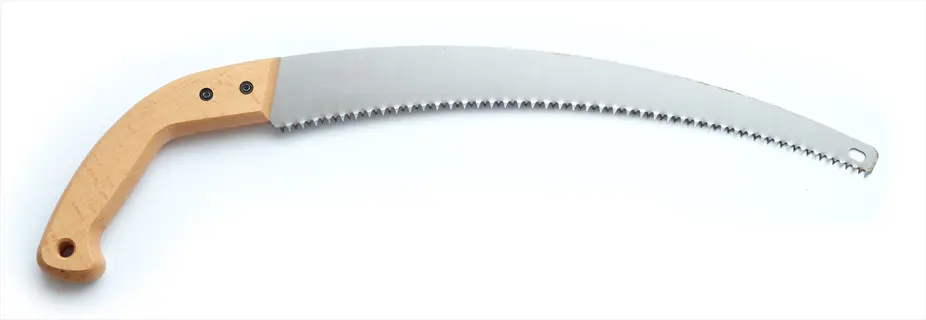
Pruning Saw
- Fact: Curved blades access tight spaces between canes when removing old or damaged wood sections.
- Fact: Triple-cut teeth design efficiently cuts through wood fibers during both push and pull motions.
- Fact: Foldable designs protect sharp blades during storage and transport between different garden locations.
- Fact: Aggressive tooth patterns quickly remove thick canes without binding in dense plant material.
- Fact: Ergonomic handles reduce wrist strain significantly during extensive sawing tasks in rose gardens.
- Fact: Rust-resistant coatings maintain sharpness despite frequent exposure to sticky plant sap.

Protective Eyewear
- Fact: Shatterproof lenses provide essential protection against flying wood chips during vigorous sawing activities.
- Fact: Wraparound designs effectively prevent thorns from entering eyes when leaning into dense bushes.
- Fact: Anti-fog coatings maintain clear visibility during early morning pruning sessions in cool conditions.
- Fact: UV protection shields eyes during extended outdoor work under direct sunlight exposure.
- Fact: Ventilated frames prevent uncomfortable lens fogging while maintaining adequate debris protection.
- Fact: Adjustable temples ensure secure comfortable fit for different head sizes among gardeners.
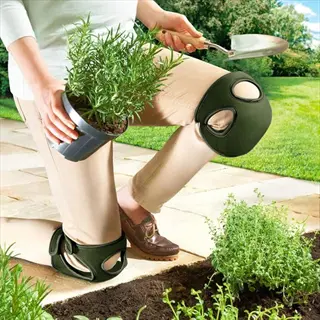
Knee Pads
- Fact: Gel cushioning protects knees effectively during prolonged pruning work near ground level.
- Fact: Waterproof exteriors repel moisture efficiently when working in dewy morning garden conditions.
- Fact: Breathable fabrics prevent uncomfortable sweat buildup during warm weather gardening activities.
- Fact: Secure straps maintain proper position without restricting healthy blood circulation.
- Fact: Low-profile designs allow natural movement required when transitioning between different positions.
- Fact: Durable construction withstands repeated contact with abrasive soil and gravel surfaces.

Weather-Resistant Apron
- Fact: Multiple pockets organize small tools keeping them within easy reach during pruning tasks.
- Fact: Waterproof fabrics protect clothing from sticky sap and disinfectant spray applications.
- Fact: Reinforced lower sections withstand abrasion caused by thorny rose canes during pruning.
- Fact: Adjustable neck straps accommodate different body sizes comfortably during gardening work.
- Fact: Quick-release buckles facilitate easy removal when pruning tasks are fully completed.
- Fact: Lightweight materials prevent overheating issues during active pruning sessions in warm weather.
Seasonal Pruning Timing Guide
The ideal time for pruning roses is based on three main factors: your local climate, the variety of roses you are growing, and regional weather trends. Coastal gardens are on different timelines than mountain ones. Hybrid teas require different treatment than climbing roses. Adjust your practices for best results.
Spring is the most crucial season for pruning roses of all kinds, and it should be done as the buds are swelling, but before the actual leaves start to open. In my New England garden, I use the blooms of forsythia as my marker for this timing. This is the time of year that growth begins as the temperatures start to increase. Be cautious about starting too early, as you may end up freezing all the new growth.
Pruning in the autumn poses significant risks in colder zones. Pruning at this time of year, especially after September, can develop tender growth. That growth perishes in the first killing frost of winter. Trust me, I've suffered the loss of a couple of prized climbers very early in my gardening career. Just do light shaping and cleanup only.
Tie each seasonal job to the health of your rose. Pruning in the spring removes sick wood and provides a shape for the bushes. Deadheading in the summer encourages repeat blooming. Preparing in the fall prevents winter damage. This seasonal rhythm maximizes flowering and disease prevention. Your reward will be beautiful roses.
Spring Pruning
- Core Task: Major structural pruning after last frost when buds swell.
- Action: Remove dead/diseased wood, open plant center, cut to outward-facing buds.
- Goal: Stimulate vigorous growth and maximize summer blooms.
Summer Maintenance
- Core Task: Deadhead spent blooms and trim unruly growth.
- Action: Cut below faded flowers above healthy leaves; avoid heavy pruning.
- Goal: Encourage reblooming and maintain shape without stressing plants.
Fall Preparation
- Core Task: Light trimming after first frost; secure plants for winter.
- Action: Reduce tall canes to prevent wind damage; clear diseased foliage.
- Goal: Prevent winter breakage while avoiding growth stimulation.
Winter Protection
- Core Task: Minimal pruning; focus on insulation and monitoring.
- Action: Apply mulch to root zones; inspect for pests or damage.
- Goal: Shield plants from freeze-thaw cycles until spring renewal.
Microclimate Adjustments
- Core Task: Modify timing for urban heat islands or high-altitude gardens.
- Action: Track local frost dates; delay spring pruning in frost-prone areas.
- Goal: Align pruning with hyperlocal conditions for optimal plant health.
Rose-Type Specific Pruning
The degree of pruning and cut-back varies widely between species of roses. For example, hybrid teas require a heavy annual prune, reducing back to 3-5 buds for large flowers. Whereas shrub roses require a light prune to keep their natural shape. Over-pruned shrubs will greatly reduce flowering.
Timing is based on blooming tendencies. Once-blooming roses like many climbers should be pruned immediately after they bloom. In contrast, repeat bloomers should be pruned in the spring, before the start of growth. I time my climber pruning to coincide with the best flower production according to their bloom time.
Trained with this horizontal method of climbing roses. Bend main canes to the side to create bloom stems from the lateral. Do not cut these main structural canes. You want to trim only the backside shoots to 3-5 buds. This method increased my 'New Dawn' climber's blooms by threefold.
Landscape roses offer a straightforward solution for novice gardeners, and I recommend them for beginners. I only recommend varieties like Knock Out® that only need pruning once a year for height reduction. They are forgiving of mistakes and will reliably bloom with minimal maintenance. Enjoy amazing roses without the demanding maintenance of pruning.
Hybrid Tea Roses
- Pruning Approach: Heavy annual pruning for large blooms
- Method: Cut to 3-5 buds above ground in early spring
- Focus: Remove woody canes over 3 years old; prioritize vertical growth
- Special Note: Seal cuts immediately to prevent cane borer damage
Climbing Roses
- Pruning Approach: Structural training for lateral bloom stems
- Method: Once-bloomers: prune after flowering; repeat-bloomers: spring pruning
- Focus: Train main canes horizontally; trim laterals to 3-5 buds
- Special Note: Avoid cutting main framework canes unless damaged
Shrub Roses
- Pruning Approach: Light shaping to maintain natural form
- Method: Remove 1/3 of oldest canes annually; trim tips for density
- Focus: Preserve vase-like structure; avoid over-thinning center
- Special Note: Tolerates minimal pruning if space allows natural growth
Landscape Roses
- Pruning Approach: Simple annual reduction
- Method: Cut entire plant back by 50% height in early spring
- Focus: Remove dead wood only; no selective bud pruning needed
- Special Note: Ideal for beginners (e.g., Oso Easy® series)
English Roses
- Pruning Approach: Moderate shaping for repeat bloom
- Method: Dormant-season pruning (Jan-Feb); trim to rounded shape
- Focus: Remove crossing branches; cut above outward-facing buds
- Special Note: Requires less precision than hybrid teas
Ground Cover Roses
- Pruning Approach: Minimal pruning every 3-4 years
- Method: Cut entire plant to 30cm height using hedge trimmers
- Focus: Remove dead wood only; no selective bud pruning required
- Special Note: Disease-resistant varieties need no sealing or disinfection
Step-by-Step Pruning Process
For optimal results, start pruning in the dry early mornings. Begin by removing all the foliage to reveal the cane structure and expose any dead wood and insect infestations. I cannot stress enough that I wear long sleeves against thorns in this step, period. It is essential to be able to see all the healthier green growth to avoid any accidental damage.
Make all cuts at a 45° angle above outward-facing buds. This encourages new growth to arise outward (away from the center). Angle cuts promote oxidation and drip water to avoid rot. I check each cut before going to the next cane. The reason for precision here impacts the entire season's growth.
After each plant, ensure to sterilize your tools with alcohol wipes. I keep disinfectant in my apron pocket. This is to prevent the spread of diseases like blackspot between roses. Additionally, clean blades make cleaner cuts on plants. Never skip this step, especially after you remove diseased wood.
Finish it off with some balanced fertilizer. Fertilize the plant immediately after pruning to help it recover. I also add Epsom salt as an additional source of magnesium. Try to prune during the morning so you are done before the heat gets to you or the roses.
Step 1: Remove Foliage
- Purpose: Expose cane structure and eliminate overwintering pests
- Action: Strip all remaining leaves using gloved hands
- Timing: Before first cut; ensures clear visibility
Step 2: Eliminate Dead Wood
- Purpose: Remove disease vectors and redirect energy
- Action: Cut dead/diseased canes to base; brown wood indicates death
- Check: Confirm live wood by green pith when cut
Step 3: Open Center
- Purpose: Improve airflow and light penetration
- Action: Remove inward-growing and crossing branches
- Shape: Create vase-like structure with outward-angled canes
Step 4: Thin Weak Growth
- Purpose: Concentrate resources on productive canes
- Action: Cut stems thinner than pencil diameter to base
- Rule: Remove anything compromising structural integrity
Step 5: Prune Healthy Canes
- Purpose: Direct growth and maximize blooms
- Action: Cut 1/4" above outward-facing bud at 45° angle
- Height: Maintain consistent bush height for aesthetics
Step 6: Seal Wounds
- Purpose: Prevent borer infestation and fungal entry
- Action: Apply pruning sealer immediately after cutting
- Product: Use breathable formulas like Bonide's sealant
Step 7: Sanitize Area
- Purpose: Eliminate disease spores and pest habitats
- Action: Rake all debris; sterilize tools with isopropyl alcohol
- Caution: Never compost rose foliage due to disease risk
Step 8: Fertilize
- Purpose: Fuel regrowth after energy-depleting pruning
- Action: Apply balanced rose food or Jobe's Spikes
- Bonus: Add Epsom salt for magnesium boost to canes
Critical Mistakes to Avoid
Using anvil shears rather than bypass tools will inflict long-term injury. Anvil blades smash stems, creating ragged wounds that attract borers and disease. I wasted several hybrid teas before realizing this difference. Bypass shears create surgical cuts that heal cleanly, keeping your roses healthy and vibrant.
Fall pruning can create frost vulnerability in the cooler zones. Pruning back after August stimulates tender, softwood growth that can be damaged by frost in the winter. I lost mature climbers early on in my gardening career by pruning them in the fall. Do not prune in the fall unless it is a hazardous branch; only conserve energy for spring.
Unsterile instruments transmit disaster DNA. A single contaminated blade spreads black spot or mosaic virus throughout your garden. I disinfect each plant with alcohol wipes after use. This simple practice saved my collection during a neighborhood rose blight incident.
Neglecting the requirements of the specific rose type leads to diminished results. Excessive pruning can lead to reduced flowering in landscape types. Insufficient pruning leads to weak growth in hybrid teas. Adjust to the needs of each plant. Your rose will provide showy, vigorous blooms for years to come.
Using Anvil Shears
- Problem: Anvil blades crush stems instead of making clean cuts
- Damage: Creates ragged wounds inviting fungal infections and borers
- Solution: Always choose bypass shears for precise slicing action
- Visual Check: Crushed cane ends appear flattened and splintered
Cutting Above Inward-Facing Buds
- Problem: Stimulates inward growth causing congestion and poor airflow
- Damage: Crowded centers trap moisture accelerating black spot disease
- Solution: Cut 1/4" above outward-facing buds at 45° angles
- Result: Promotes open vase-shaped growth for healthier plants
Over-Pruning in Fall
- Problem: Heavy cutting triggers new frost-sensitive growth
- Damage: Tender shoots die in freezing temperatures wasting plant energy
- Solution: Limit fall pruning to removing only hazardous long canes
- Timing: Trim after first frost but before ground freezes
Skipping Tool Sterilization
- Problem: Spreads pathogens like rose mosaic virus between plants
- Damage: Incurable viral infections stunt growth and deform leaves
- Solution: Wipe blades with 70% isopropyl alcohol after each plant
- Critical Step: Especially after cutting diseased wood
Ignoring Rose Type Needs
- Problem: Heavy pruning of landscape roses reduces flowering
- Damage: Over-thinning removes bloom-producing growth points
- Solution: Hybrid teas need hard pruning; shrub roses prefer light trims
- Reminder: Match intensity to variety for optimal results
5 Common Myths
Every rose variety needs to be aggressively pruned on an annual basis to encourage flowering and maintain good health.
The level of pruning should be appropriate for the type of rose; landscape varieties like the Knock Out rose do fine with minimal pruning, while hybrid teas require significant pruning to stay healthy. Pruning too much from shrub varieties can remove wood that offers bloom potential, diminish flowering, and cause stress as it draws energy to regrow. Pruning just enough, balanced to the variety, is the goal and seems to be the most effective way to achieve the undoing process without shredding the living plant structure.
Cutting rose canes inevitably kills the plant because pruning causes fatal shock and prevents recovery from wounds.
Roses evolved to regenerate vigorously after pruning through dormant buds that activate within days of cutting. Proper 45 angled cuts above outward-facing buds stimulate new growth channels without harming the plant. Healthy specimens can lose up to 70% of canes and fully recover within one growing season when pruned correctly.
The angle of pruning cuts doesn't impact rose health since plants heal regardless of how stems are trimmed.
45 angled cuts are critical because they shed water away from buds, preventing rot that invites cane borers and fungal diseases like botrytis. Flat cuts trap moisture against buds, while steep angles expose excessive pith tissue. Correct sloping cuts promote rapid callusing that seals wounds against pathogens within 72 hours.
Cutting off faded blooms is cosmetic only. It is not necessary because roses will rebloom on their own.
Deadheading will reroute energy away from seed formation and into new bloom growth through suppression of hip formation. If faded flowers are not cut off, hormonal signals are sent to inhibit the flowering cycle. Regularly removing faded blooms, above the five-leaflet compound leaves, will support reblooming in repeat-flowering varieties by 200% while inhibiting fungal colonization on decaying petals.
You can prune roses in any season at any time; roses adapt to being cut back in all seasons, so the transactional timing of pruning is not critical in regard to results.
Seasonal timing, however, does influence when roses bloom during the season and how likely they are to frost. In the spring, pruning stimulates growth and blooms at the optimal time, while fall pruning stimulates plants to throw out frost-tender shoots into the fall. Pruning during a dormant season (for an entire plant) promotes flowering by aligning with its natural growth patterns. Pruning at the wrong time can allow for delays in blooming of 6-8 weeks, and cuts open roses to pathogen exposure from wet weather.
Conclusion
The cornerstone of healthy roses is timing and technique. When you get these two things right, you can prevent disease and maximize blooms. I've watched particularly sad, neglected gardens turn around just on that principle alone. The details of your attention will determine the success of your flowering every season.
Keep in mind three key principles: season pruning, select the right tool, and adapt to (types of roses) . Hybrid teas are different from shrub roses, Climbers are different from landscape roses. Adapting to those 3 elements can yield consistent outcomes.
Beginners should familiarize themselves with forgiving landscape varieties like Knock Out® roses. They are the best teacher, as they can absorb mistakes while imparting fundamentals. These were the first roses I ever succeeded with, and, like all the forgiving landscape varieties, they instill confidence. Next, you will choose a relatively temperamental hybrid tea rose or an intricate climber.
Every cut you make will determine the beauty of next spring. Approach each cut with intention and care. You'll be met with vibrant blooms of appreciation. This simple logic comes from my decades of experience. Happy pruning and enjoy the beautiful garden!
External Sources
Frequently Asked Questions
What is the best month for pruning roses?
The ideal month varies by climate: prune in late May for Zones 3-4, March-April for Zones 5-7, and January-February for warmer zones. Always prune after frost risk passes but before buds fully open for optimal results.
How should I prepare roses for winter?
Winter preparation involves light trimming after first frost: reduce tall canes to prevent wind damage, clear diseased foliage, and apply mulch to root zones. Avoid heavy pruning to prevent stimulating frost-sensitive new growth.
Can all rose varieties be pruned the same way?
No, pruning techniques must match rose types:
- Hybrid teas need heavy pruning (70-90% reduction)
- Climbers require moderate lateral trimming
- Shrub roses thrive with light shaping
- Landscape varieties need only simple height reduction
What critical mistakes should I avoid when pruning?
Avoid these common errors: using anvil shears that crush stems, cutting above inward-facing buds causing congestion, over-pruning in fall triggering frost damage, skipping tool sterilization spreading diseases, and ignoring variety-specific intensity needs.
Is deadheading necessary for rose maintenance?
Yes, deadheading redirects energy from seed production to new blooms. Removing spent flowers above five-leaflet sets can boost rebloom by 200% in repeat-flowering varieties while preventing fungal growth on decaying petals.
How far down should roses be cut in winter?
Winter cutting depth depends on the variety: hybrid teas should be reduced to 3-5 buds above ground, while shrub roses need only 20-30% tip trimming. Never cut roses to the ground unless removing dead specimens.
Do roses need special care in October?
October care focuses on winter prep: remove fallen leaves to eliminate pests, apply final fertilizer for root strength, and conduct light shaping. Avoid major pruning to prevent stimulating vulnerable new growth before frost.
What tools are essential for proper rose pruning?
Critical tools include:
- Bypass shears for clean cuts
- Gauntlet gloves for thorn protection
- Disinfectant spray to sterilize tools
- Pruning saw for thick canes
- Sharpening stone to maintain blades
Why does pruning angle matter for rose health?
45° angled cuts shed water away from buds, preventing rot that invites cane borers. Flat cuts trap moisture while steep angles expose vulnerable tissue. Proper sloping promotes rapid healing that seals wounds within 72 hours.
Should I fertilize after pruning roses?
Yes, fertilizing fuels regrowth after energy-depleting pruning. Apply balanced rose food or slow-release spikes immediately after cutting. Adding Epsom salt provides magnesium for cane strength during the recovery period.
